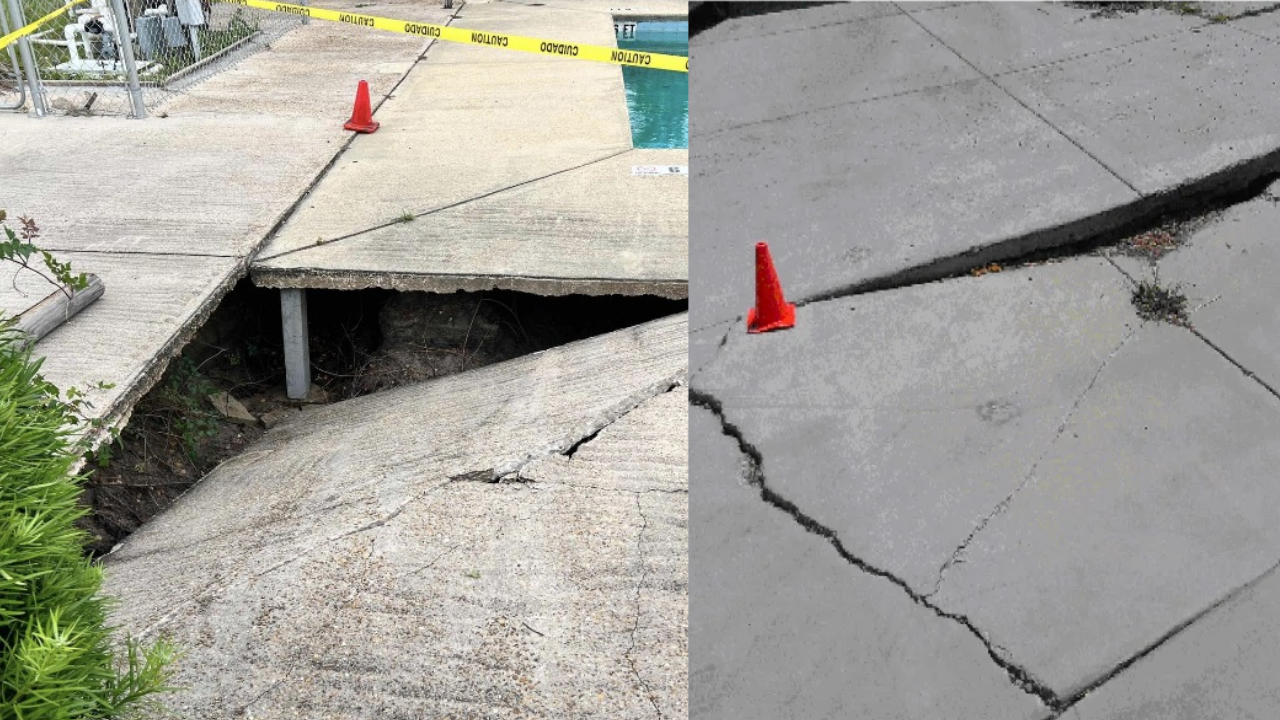Concrete is one of the most durable building materials, but even the strongest slabs aren’t immune to time and the environment. Over the years, concrete surfaces—whether sidewalks, driveways, warehouse floors, or patios—can begin to sink, crack, or shift. For commercial property owners, this doesn’t just create an eyesore; it introduces potential safety risks, liability concerns, and costly disruptions.
But while replacing concrete has traditionally been the go-to solution, modern technology has introduced a far more efficient and sustainable method: concrete leveling, also known as slab lifting or polyurethane foam injection.
So, what is concrete leveling, how does it work, and why is it gaining momentum across commercial properties nationwide? Let’s dive in.
Understanding Why Concrete Sinks
Concrete sinking is typically caused by soil movement beneath the surface. This can happen for a variety of reasons:
- Erosion due to water runoff or poor drainage
- Poor soil compaction during the original installation
- Freeze-thaw cycles that cause the ground to expand and contract
- Voids beneath the slab, either from settling or decomposing organic material
Over time, these conditions cause the slab to lose its support, resulting in uneven surfaces, tilting, or cracking.
The Problem with Uneven Concrete
Beyond aesthetics, uneven concrete can create a range of issues for businesses and property owners:
- Trip hazards for pedestrians
- ADA compliance violations
- Water pooling, leading to further damage or safety concerns
- Operational disruptions, especially in industrial or warehouse settings
In commercial settings, even small inconsistencies in the ground can have big consequences, both financially and from a risk management standpoint.
Traditional Replacement vs. Modern Leveling
Historically, the only fix for sunken concrete involved demolition and replacement—a time-intensive, labor-heavy, and costly process. It often requires days of downtime and creates considerable mess, from removing debris to waiting for new concrete to cure.
Concrete leveling presents a smarter alternative. Rather than tearing out the existing slab, it lifts the concrete back to its original position by injecting a material underneath. Today, the most advanced and widely used technique is polyurethane foam injection.
How Polyurethane Foam Injection Works
The process behind foam injection is straightforward yet highly effective:
- Assessment: Technicians evaluate the affected area to determine the extent of the sinking and where the foam will be injected.
- Drilling: Small holes (typically less than an inch in diameter) are drilled into the slab.
- Injection: A two-part polyurethane foam is injected beneath the slab, expanding to fill voids and lift the concrete evenly.
- Sealing: Once the slab is level, the drill holes are patched and the surface is ready for use—often within minutes.
The foam is lightweight but strong, resistant to moisture, and durable enough to support heavy loads, making it ideal for everything from walkways and loading docks to warehouse floors and driveways.
Benefits of Concrete Leveling
There are several reasons why property owners are increasingly turning to foam-based concrete leveling:
1. Minimal Downtime
Most projects can be completed in a matter of hours, not days. There’s little to no disruption to business operations, which is especially critical for commercial and industrial sites.
2. Cost-Effective
Because you’re preserving the existing slab, leveling costs significantly less than full replacement. There’s no hauling, demolition, or curing time to consider.
3. Environmentally Friendly
Reusing your existing concrete reduces waste and the environmental impact of producing and transporting new materials. Foam injection also creates minimal surface disturbance.
4. Durability
Polyurethane foam doesn’t shrink, wash away, or degrade over time. It helps stabilize the underlying soil and prevents future sinking.
5. Improved Safety
Level surfaces reduce trip-and-fall risks, improve accessibility, and present a more professional appearance to clients and visitors.
Applications Across Industries
Concrete leveling isn’t limited to sidewalks or driveways. It’s used across a wide range of industries and settings:
- Retail centers: Keeping entryways smooth and welcoming
- Office buildings: Maintaining ADA-compliant paths and walkways
- Warehouses and factories: Ensuring even floors for forklifts and heavy machinery
- Municipal infrastructure: Repairing sidewalks, curbs, and public spaces quickly and affordably
- Hospitals and schools: Minimizing risk in high-traffic zones
Whether the issue lies in your parking lot, warehouse, or building perimeter, leveling ensures safety and efficiency without long interruptions.
A Trusted, Eco-Conscious Approach
With the demand for sustainable solutions growing, polyurethane concrete lifting stands out as a low-impact, high-performance method that helps extend the life of existing infrastructure.
At Ecolift USA, this is exactly the type of work we specialize in.
Rooted in environmental responsibility and technical precision, we provide non-invasive concrete leveling services tailored to commercial and industrial properties. Our team uses high-performance polyurethane foam to lift and stabilize sunken slabs while minimizing downtime and maximizing long-term results.
Whether you’re managing a busy facility or just want to make sure your property is safe and presentable, we’re here to help keep your surfaces solid, stable, and sustainable.
Have questions about whether concrete lifting is right for your property?
Feel free to reach out—we’re happy to share insights and help you explore your options.


